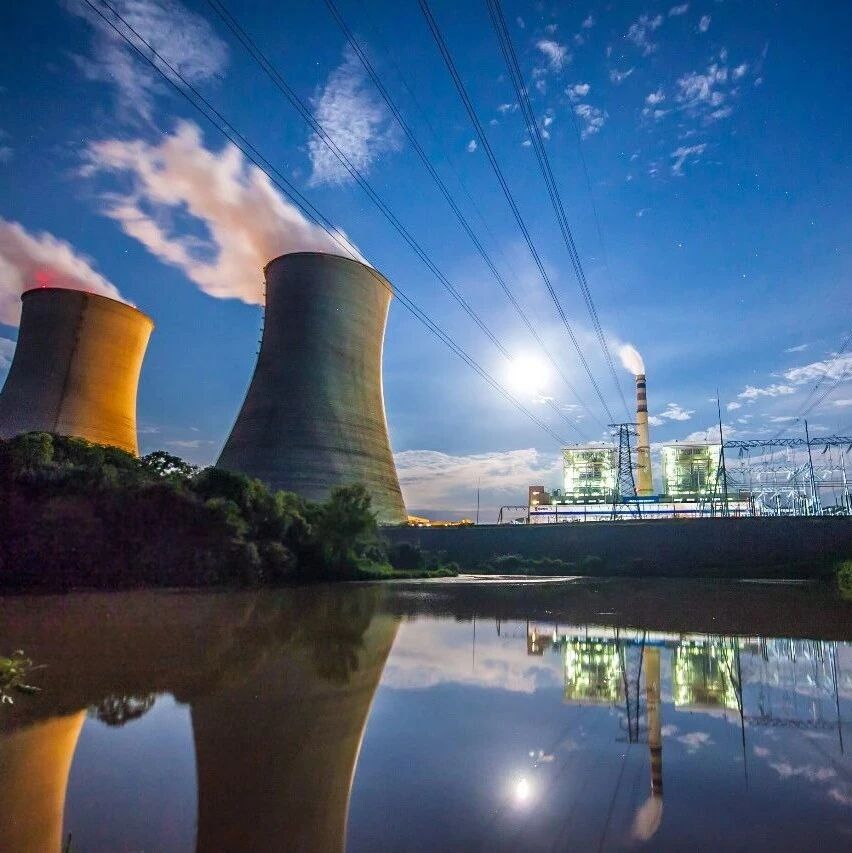

The development of AI infrastructure is outpacing the pace at which regulations and governance are being refined.
Image source:Reuters
Lee Poh Seng
Director of the Department of Mechanical Engineering, National University of Singapore
Executive Director of the Energy Institute
Heng Wang
Professor of Law, Yang Bangxiao School of Law, Singapore Management University
Associate Dean for Faculty and Research Affairs
The development of artificial intelligence (AI) infrastructure is outpacing the pace at which regulatory measures to govern it can be fully implemented.
From computing power to thermal management, the physical footprint of AI models is rapidly expanding.
Asia can lead the way and demonstrate what a forward-thinking, integrated AI ecosystem should look like.
Artificial Intelligence (AI) The rapid deployment of technology is transforming every aspect, from data infrastructure to global governance.
AlthoughAIIt has brought significant benefits, including improved efficiency and the promotion of sustainable initiatives—such as tracking the carbon footprint of product lifecycles and optimizing energy management—but its large-scale adoption also poses challenges.
AsAIThe model's scale and complexity continue to grow, leading to a significant increase in its physical footprint—such as computing power requirements and thermal management needs.
This impact has raised concerns about energy and water resource consumption, electronic waste—including batteries and outdated servers—and the industry's reliance on non-renewable resources like rare earth elements for hardware manufacturing.
Although technological innovation often aims to control resource consumption,Jevons ParadoxIndicates that asAIIncreased usage and improved efficiency can, paradoxically, lead to a rise in overall resource consumption.
Meanwhile, from environmental law to digital regulation, governance frameworks are struggling to keep pace. A new sense of tension is emerging:AIInfrastructure is developing faster than the pace at which regulations and governance are being refined to ensure…AIInfrastructure serves the interests of the public and the planet.
This trend will increasingly influence decision-making in areas such as policy formulation, business, and infrastructure investment.
Infrastructure and governance must develop in tandem.
Despite infrastructure and digital governanceClearly belonging to different fieldsHowever, the two are moving toward convergence. Yet, this integration has not yet been thoroughly discussed among the public. Today's digital age is revealingThree Important Mismatch Phenomena:
- Functional mismatch:AIThere is a "silo effect" between sectors such as infrastructure, environmental sustainability, and finance.
- Spatial mismatch:There is insufficient coordination among local, national, and international governance systems.
- Time mismatch:AIThere is a conflict between the system's rapid deployment cycle and the long-term need for environmental and social resilience.
Addressing these mismatches requires a global perspective, ensuring that infrastructure development and governance advance in tandem. This is particularly crucial for the Asia-Pacific region, which is being shaped by the intersecting challenges of urban density, climate vulnerability, and the accelerating pace of digital transformation.
Singapore's approach includes: byInformation, Communications, and Media Development Authority(IMDA) andEconomic Development BureauLed the development ofGreen Data Center Roadmap; ByIMDAAndAI VerifyEstablished by the foundationGenerative AI Governance Framework Model; and the broaderThe Singapore Green Plan 2030
These initiatives demonstrate early efforts to align infrastructure with the governance framework, fostering the development of a sustainable digital ecosystem.
Infrastructure Transformation
AIIts growth has intensified the demand for advanced digital infrastructure, particularly data centers. From power grids to e-waste management, the entire ecosystem is under pressure across multiple dimensions.
Air-cooling technology is approaching its thermodynamic limits. This is because rack densities are expected to reach as high as600Kilowatts—traditional air-cooling systems struggle to handle the next generation.AIThe significant thermal load generated by the hardware.
The shift toward liquid cooling and hybrid cooling technologies is critical and will profoundly impact infrastructure design, financing, security, and international standards.
Liquid cooling solutions like direct chip cooling and immersion cooling offer significantly higher heat transfer efficiency, while also reducing energy consumption and minimizing space requirements.
However, these solutions also introduce new operational challenges, such as coolant selection, maintenance guidelines, and risk management. These challenges must align with the latest governance mechanisms to ensure safe and sustainable deployment.
Meanwhile, regardingAIA comprehensive environmental assessment of infrastructure should cover Scope 1, 2, and 3 emissions, aligning withGreenhouse Gas Accounting System, covering the impacts of energy use, carbon emissions from manufacturing processes, and waste materials.
Regulatory lag
The regulatory framework struggles to keep up.AIRapid development of infrastructure and systems. Without proactive management, the following risks will increasingly come to the fore:
- The regulatory compliance framework across jurisdictions has become fragmented.
- Regulatory arbitrage leads to a lower environmental standard.
- The sustainability report is inconsistent or incomplete.
Effectively addressing the above risks requires:AIInfrastructure should establish clear, interoperable standards for sustainable development. These standards should facilitate environmental impact assessments, foster cross-border regulatory collaboration, and support a harmonized reporting framework.
AsAIAs systems become increasingly complex, infrastructure demands will show distinct divergences, ranging from general-purpose foundational models to domain-specific deployments. The governance framework must remain flexible enough to accommodate these differences without compromising sustainable development goals.
Real-time infrastructure telemetry data—covering energy usage, water consumption, thermal efficiency, and emissions—should be collected transparently and maintained as trustworthy.AIDisclosure as part of the environmental assessment.
These practices should align with currently evolving standards. The International Organization for StandardizationISO/IEC SC42, and the Institute of Electrical and Electronics EngineersP7100 AI Environmental Impact Working GroupThe standards established are two examples.
Singapore's efforts, such as those by the Building andIMDALaunched2024 Data Center Green LabelThe plan, managed by Singapore's Enterprise SingaporeData Center Energy Efficiency Grant, all of which serve as examples of how proactive regulatory innovation can foster leadership in sustainable development.
Collaboration process
Achieving sustainabilityAIGovernment, industry leaders, academic institutions, and broader communities must work together to ensure that the growth of digital infrastructure aligns seamlessly with environmental and societal goals.
Globally, efforts are underway to integrate sustainable development intoAIA core framework for collaboration is emerging.
In Europe, the EU's2024The "AI Act for Older Adults" calls for general-purposeAIThe model's supplier records its energy consumption. This is the first step in encouraging the industry to take responsibility for its environmental footprint.
Meanwhile, Singapore'sGreen Data Center RoadmapPromote energy efficiency upgrades, certification standards, and sustainable operations.
This roadmap can be aligned with"ASEAN Guidelines on AI Governance and Ethics"Implement in coordination. If used properly, this guide could help members navigateAIConduct more robust environmental assessments throughout the entire lifecycle.
Institute of Electrical and Electronics Engineers,ISO/IEC SC42, international organizations such as UNESCO and the OECD are also working to develop specialized measures aimed atAIGlobally recognized sustainability standards for infrastructure lay the foundation.
This clearly demonstrates that Asia has a crucial opportunity to lead by example—not only by adopting best practices but also by shaping the standards and governance models of tomorrow.
People are increasingly recognizing that sustainable development must be deeply rooted inAIEach stage of the life cycle——From the design of models and infrastructure, to their deployment, and finally to decommissioning.
To achieve success, Asia must prioritize the following key areas:
- Conduct a full lifecycle impact assessment.
- Tackling the complexity of infrastructure.
- Enhance transparency in resource utilization.
- Promote regulatory innovation.
- Promote cross-border standardization.
By directly linking infrastructure development with environmental responsibility, Asia can demonstrate forward-thinking, integrated approaches.AIThe face that ecosystems can and must present.

The above content represents the author's personal views only.This article is translated from the World Economic Forum's Agenda blog; the Chinese version is for reference purposes only.Feel free to share this in your WeChat Moments; please leave a comment at the end of the post or on our official account if you’d like to republish.
Translation:Di ChenjingEdited by: Wan Ruxin
The World Economic Forum is an independent and neutral platform dedicated to bringing together diverse perspectives to discuss critical global, regional, and industry-specific issues.
Follow us on Weibo, WeChat Video Channels, Douyin, and Xiaohongshu!
"World Economic Forum"


